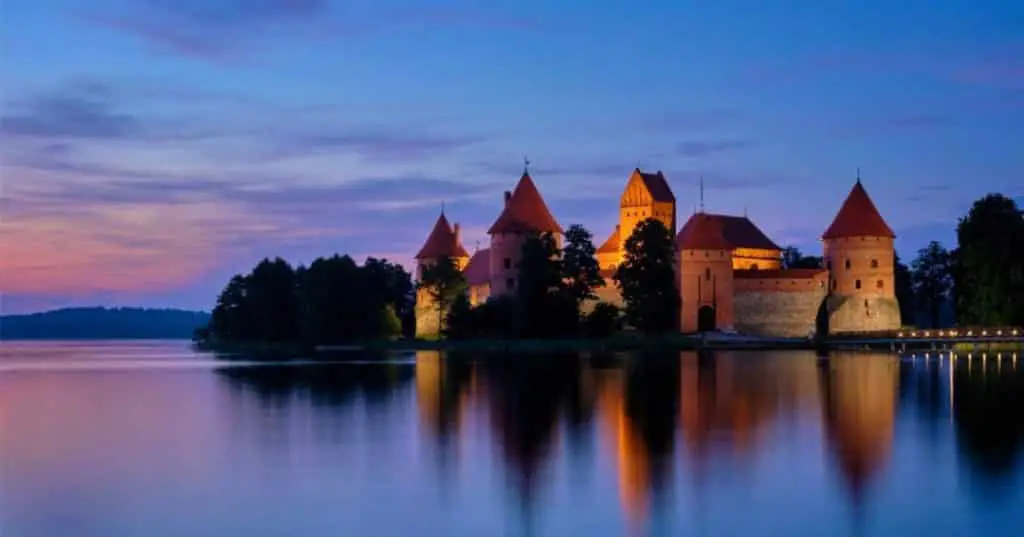One of the new civilizations released in “The Last Khans” was the Lithuanians, an interesting civilization to say the least, and threatening when played to their strengths. Right off the bat, Lithuanians 9 times out of 10 want a post-imperial army composition of paladin’s with +4 attack due to relics combined with speedy skirmishers, that benefit from extra pierce armor from a unique tech “tower shields”. This civilization, while best played towards the late game, does have the capacity to stall out their game until then due to their defensive capabilities. Although, that being said, they can get quite ahead due to the +100 food, which can result in earlier up-times and more aggression. As the Lithuanians, you are often setting the pace.
CIVILIZATION BONUSES
- Start with an additional 100 food, and obtain 100 food per town center.
- Spearmen and Skirmisher line movement speed increased by 10%.
- Knight-line and Leitis benefit from an additional attack for each relic stored in the monastery (capped at 4 additional attack).
TEAM BONUS
- Monastery works 20% faster.
UNIQUE UNIT
- Leitis (Heavy cavalry unit that negates melee armor when attacking).
UNIQUE TECHNOLOGIES
- Hill Forts – Town Centers receive an additional 3 range.
- Tower Shields – Spearmen and Skirmisher line receive an additional 2 pierce armor.
View the Lithuanian Tech Tree
STRATEGY
Lithuanians are threatening, whether on open or closed maps, hybrid or even water maps. They thrive when given the chance to boom and collect relics. Although they are played preferably in the late game, they have a lot going for them in the early game due to a bonus 100 food, which assists in aggression or in playing defensively. This extra food can allow aggression in the form of a 19 population scout rush, or with the fastest drush in the game.
Lithuanians have a superior defensive ability in the mid-game. Their trash moves faster, their Leitis is cheap and ignores armor, their monasteries work faster, allowing for monk defence and they become even more defensive when Hill Forts is researched, as they then benefit from additional range at their town center. Lithuanians gain a power spike upon collecting relics, as their cavalry become oppressive with the extra attack.
WEAKNESS
Lithuanians struggle to keep up with civilizations such as Aztecs, Vikings or Khmer; their only economic bonus of the additional food does not lend to a healthier economy, but rather to the ability to deal damage and snowball a lead. As a result, if Lithuanians are trying to take relics and boom towards their post-imperial strength, they will always be at a disadvantage to strong economic civilizations. Without access to at least two relics, Lithuanians struggle to field any strong options. In this scenario, Leitis are a better choice than paladin, as they are cheaper to field and to mass, unless it is difficult to create the castles for production purposes.
Lithuanian FAQ’s
Leitis or Paladin
Leitis are a great option, but it is often difficult to maintain the production you otherwise could if you were making knights out of stables, given they must be made out of castles.
If you already have castles on the map, leitis are cheaper than knights, and are produced faster.
The general rule is that if either leitis or knights are readily able to be made, use knights/paladins in team-games or against ranged match-ups, and leitis against melee match-ups.
What role should Lithuanians play in team games
Undoubtedly, Lithuanians should be played in the pocket position. With their extremely strong knights on account of extra attack and their smooth economy, Lithuanians prefer the pocket position to boom and amass their strong knights.
That being said, on account of the additional food per town center, there is room for the Lithuanians to use a messy strategy in the flank position, such as an all-in tower rush or drush. Any meta strategy in the flank position will be outperformed by stronger archer civilisations, such as Britons or Mayans.
What maps do Lithuanians excel in
Lithuanians excel in open maps such as Arabia, Cenotes, Valley and Lombardia. Usually in these open maps, the Lithuanian player will make a fast scout-rush, transition into flooding the map with knights on one town-center in order to obtain map control and to obtain the relics.
Whilst this strategy results in the Lithuanian player being behind on their boom, upon collection of at least three relics with this strategy, and with the knights accompanied by monks or skirmishers, the Lithuanian player can make an offensive siege workshop and end the game with siege.
Best Lithuanian army composition
On open maps, Lithuanians generally always work towards an paladin-skirmisher army composition.
Not only is this generally a powerful combination, but this army composition makes use of the extra speed and pierce armor of the skirmishers, as well as the extra attack of the paladins where relics have been collected.
On closed maps, a monk-siege composition (generally bombard cannons) coupled with speedy halberdiers should be strong. The enemy will usually then be forced into making skirmishers, which may be countered so long as you tech into winged hussars or champions
Can Lithuanians open archers
Lithuanians can open archers and even tech into crossbowman and thumb ring, but will not want to stay on crossbows long-term, if it may be avoided, as they cannot research arbalester.
Should Lithuanians tech into cavalry archers
It may be tempting to tech into cavalry archers if you open archers as Lithuanians, but Lithuanians also miss out on parthian tactics. Without parthian tactics, Lithuanian cavalry archers feel underwhelming for their price. Cavalry archers should therefore only be used temporarily or on a commentary basis

